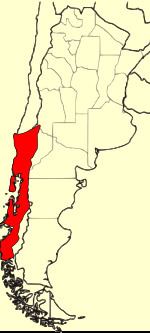Order Anura Higher classification Eupsophus | Phylum Chordata Scientific name Eupsophus calcaratus Rank Species | |
 | ||
Similar Eupsophus, Frog, Amphibians, Eupsophus roseus, Eupsophus emiliopugini | ||
Eupsophus calcaratus
Eupsophus calcaratus (common name: Chiloe Island ground frog) is a species of frog in the Alsodidae family. It is endemic to Patagonia (southern Argentina and Chile). It has one of the broadest distributions of any Chilean frog.
Contents
Description
Eupsophus calcaratus are moderate-sized frogs measuring 31–36 mm (1.2–1.4 in) in snout–vent length. Head is wider than long and snout is rounded. Skin is only slightly granulated but has many spots and reticulated pattern. The colouration is highly variable, but it usually has a characteristic, hourglass-shaped pattern in its head.
The tadpoles develop in water-filled cavities on the ground. Males show parental care: they remain with the eggs and tadpoles. Tadpoles are endotrophic.
Habitat and conservation
Its natural habitats are the humid Nothofagus temperate forests. It occurs in shady microhabitats (swamps and streams borders).
The species is common in appropriate habitats. Nevertheless, habitat loss and degradation due to deforestation is a major threat, and water pollution caused by forestry work is also a threat.
